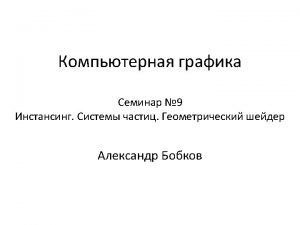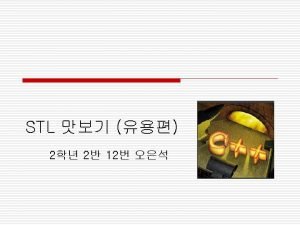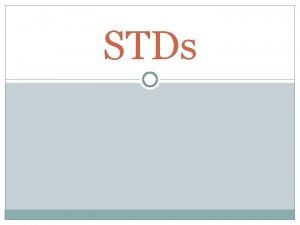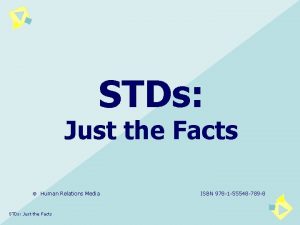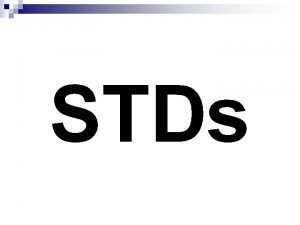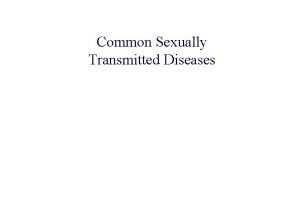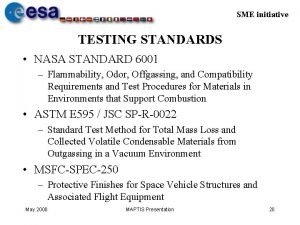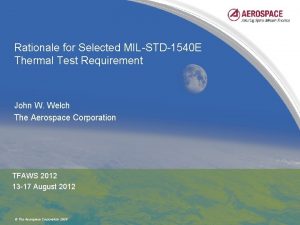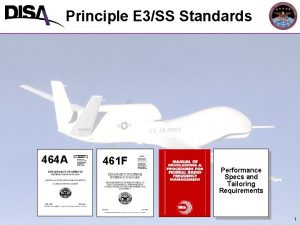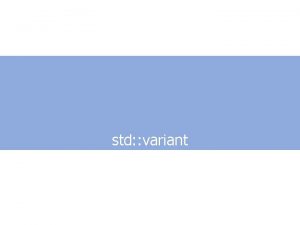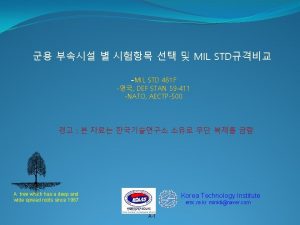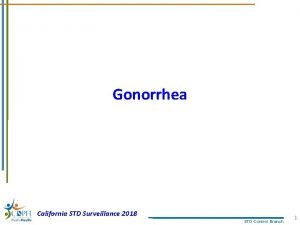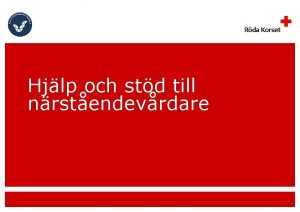Std 4 Questions 21 39 grade Grade Standard























- Slides: 23

Std 4 - Questions 21 -39 «grade» Grade: Standard 4 - practice q's Subject: «date» Date:

ANSWERS ARE ON THE LAST PAGE OF THIS FILE ANSWERS

1 What is 20 o. C in kelvins? A 253 K B 273 K C 293 K D 373 K

2 what is 100 C in kelvins? A 32 K B 100 K C 212 K D 373 K

3 What is 0 k in Celsius? A -373 o. C B -273 o. C C 100 o. C D 212 o. C

4 What is 100 K in Celsius? A -273 o. C B -173 o. C C 0 o. C D 100 o. C

4. f. ) Students know there is no temperature lower than 0 Kelvin. 5 The coldest temperature possible is called A absolute cold B absolute freeze C absolute nil D absolute zero

6 The Kelvin scale A has larger units than the Celsius scale B has units about half the size of the Farenheit scale C does not have negative numbers D is a theoretical scale only

7 Which temperature is impossible? A 20 o. C B -20 o. F C 20 K D -20 K

8 Which temperature is impossible? A -273 o. C B -273 o. F C -273 K D 0 K

9 At absolute zero A the fahrenheit scale ceases to exist B no further heat could be removed from a body C H 2 O is in the form of a liquid D every substance must be in a gaseous phase

10 4. g. ) Students know the kinetic theory of gases relates the absolute temperature of gas to the average kinetic energy of its molecules or atoms. The kinetic molecular theory of gases explains the behavior of gases at the molecular level. all of these statements are part of this theory except A gas molecules experience completely elastic collisions B all gas molecules have the same average kinetic energy at the same temperature. C gas particles are in constant, random motion. D gas molecules are incompressible

11 Gas particles A move faster as temperature increases B move faster as temperature decreases C move slower as temperature increases D do not show a correlation between movement and temperature

12 At higher temperatures, gas molecules A contract. B slow down in movement. C hit the walls of the container harder. D hit the walls of the container softer.

13 At higher temperatures, gas molecules A slow down B exert more pressure C have less energy D have more organization

14 At absolute zero, gas molecules A move slower than liquid molecules B are converted to liquid molecules C show very little movement D move in a straight line

15 4. h. ) Students know how to solve problems by using the ideal gas law in the form PV=n. RT What happens to the volume of a gas when the pressure is increased by a factor of 4 (assuming all other factors remain the same)? A it is reduced by a factor of 4 B it is reduced by a factor of 2 C it is increased by a factor of 2 D it is increased by a factor of 4

16 What happens to the volume of a gas when the temperature is increased by a factor of 4, if all other factors remain the same? A Is is reduced by a factor of 4 B it is reduced by a factor of 2 C it is increased by a factor of 2 D it is increased by a factor of 4

What is the pressure produced by 1. 0 mol O 2 in a 22. 4 -L container at 273 K? Use R=0. 0821 (L*atm)/(mol*K). 17 A 0. 5 atm B 1. 0 atm C 2. 0 atm D 4. 0 atm

18 What is the pressure produced by 1. 0 mol O 2 in an 11. 2 L container at 273 K? use R=0. 0821 (L*atm)/(mol*k). A 0. 25 atm B 0. 5 atm C 2. 0 atm D 4. 0 atm

19 What is the pressure produced by 4. 0 mol O 2 in a 22. 4 -L container at 273 K? use R=0. 0821 (L*atm)/(mol*K). A 0. 25 atm B 0. 5 atm C 2. 0 atm D 4. 0 atm


ANSWERS: 1. C 2. D 3. B 4. B 5. D 6. C 7. D 8. C 9. B 10. D 11. 12. 13. 14. 15. 16. 17. 18. 19. A C B C A D B C D
 Standard error of sampling distribution
Standard error of sampling distribution Definition of home language
Definition of home language What is standard cost
What is standard cost Standard kandungan dan standard pembelajaran
Standard kandungan dan standard pembelajaran Moles triangle concentration
Moles triangle concentration Funtion of a petal
Funtion of a petal Wind pollinated flowers features
Wind pollinated flowers features Uniform vec3
Uniform vec3 Std wizard
Std wizard Herb sutter atomic weapons
Herb sutter atomic weapons Stl sort
Stl sort A bacterial std that usually affects mucous membranes
A bacterial std that usually affects mucous membranes Sti vs std
Sti vs std What std are curable
What std are curable Std:async
Std:async Penile sore
Penile sore Nasa std 6001
Nasa std 6001 Std crabs pics
Std crabs pics Sexually transmitted diseases
Sexually transmitted diseases Std white discharge
Std white discharge Massage parlor guam
Massage parlor guam Using namespace std class base
Using namespace std class base Mil-std-1540e
Mil-std-1540e Mil-std-464
Mil-std-464







